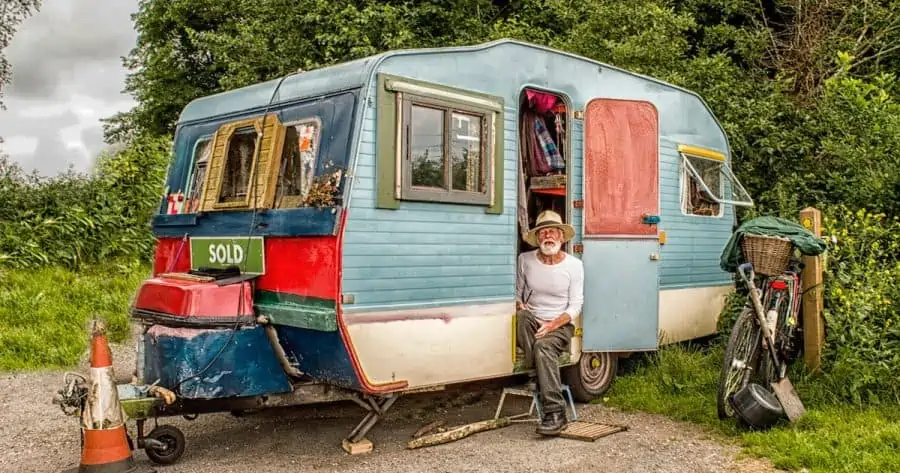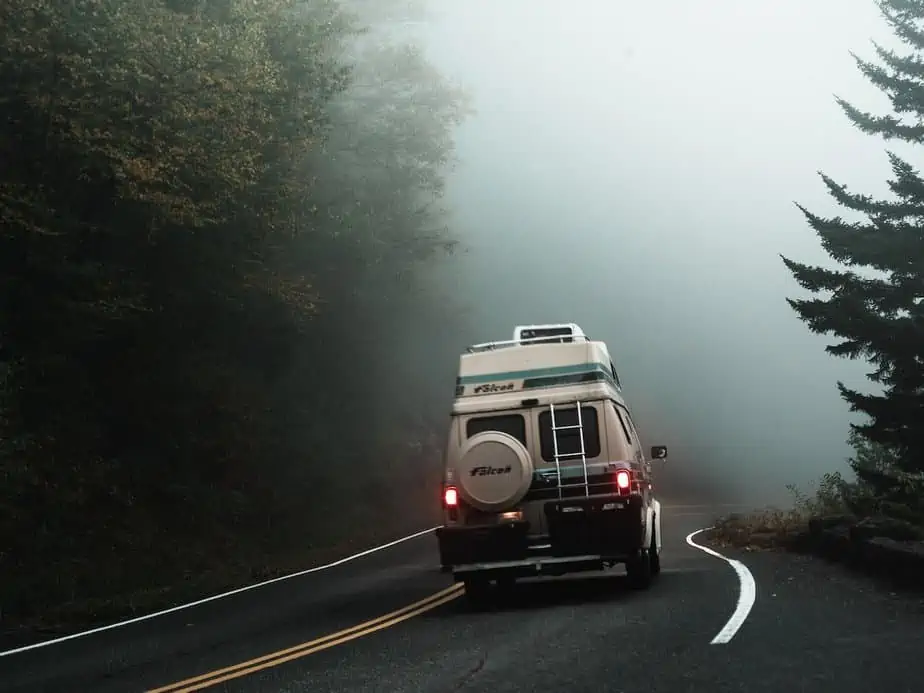Owning a camper without an automatic leveling mechanism can be quite stressful since you have to level it every time you park. If you have ever done this, you know how difficult it can be, especially if no one can assist you. So, is there an easier way to level a camper without moving it?
A parked camper can easily be leveled using the wedge system and the correct equipment. You will need to drive your camper onto a wedge and park it there. Then, you can level it from the front to the back using a bubble level and a tongue jack.
There are other ways to level a parked camper without moving it, including using leveling jacks or leveling blocks. Continue reading to learn about each method!
Contents
How To Level A Camper Using The Wedge System
To begin this method of leveling a camper, you need to have a bubble level and a tongue jack. Start by placing your level on the window frames of your camper to measure its current level accurately.
Then, use the tongue jack to adjust the front of your camper by raising or lowering it until the reading says level on your bubble level. Next, continue lowering the tongue jack until it is tight and cannot move. Before you unhitch the jack, you must check the wedge levels correctly by using chocks. This will ensure that your camper is secure on the ground.
However, buying a motorhome with an automatic leveling system is advised if you are new to buying a camper. This saves you time, as all you need to do is press the leveling button, and your camper will adjust as required.
Next, let’s discuss leveling a camper using blocks!

How to Level a Camper Using Leveling Blocks
For this method, you will need levelers, a drill, a hammer, concrete screws, and washers. Follow these steps to learn the process:
1. Push the parking brake on your camper as you park it. No matter how often you change the levelers, your camper will not be level if you park on unlevel ground.
2. Next, position the leveling blocks beneath your camper’s front wheels. These ensure that your camper does not move while it is being leveled. Place a scissor jack under your camper’s front and rear wheels so the wheel rises off the ground when the jack is pulled.
3. Continue raising the camper above ground level by extending both jacks until it is high enough to fit leveling blocks underneath the wheels.
4. Once raised, shelter the front and back wheels with the leveling blocks.
5. Start lowering the camper onto the leveling blocks gradually. Using a level to confirm this, ensure the camper levels from side to side as you lower it.
6. Next, you need to secure the leveling blocks in their position to prevent movement when the camper is driven off them.
7. For this, use the drill to make a hole through each leveling block’s center. This hole must be large enough to fit the concrete screws but tight enough to prevent the washer from falling through.
8. Use the drill again to tighten a concrete screw inside each hole. Insert a washer into the screws before tightening them to ensure they do not pull through the leveling block.
Then, finish the process by removing the jacks and levels. By following the steps above, you can easily level your camper without moving it.
The following video details the process of leveling a camper:
Can a Stabilizer Jack be Used to Level Campers?
It is a common misconception to believe that stabilizer jacks can assist in leveling your camper. Stabilizer jacks are primarily used steady the camper by stopping all movements created inside it.
However, they are not durable enough to hold the weight of your camper. Thus, stabilizer jacks to level campers can permanently damage your leveling jacks and the camper’s frame.
Having discussed the feasible methods of leveling a camper, you might wonder what happens if you do not level your camper.
Is It Necessary To Level A Camper?
Campers are vulnerable to damage if they remain unleveled for too long. Always check that your camper is level from front to back and side to side since failing to do so can place additional strain on several components, including the plumbing, door frames, cabinets, and suspension.
If it remains unleveled, the doors and cupboards inside your camper will not work properly. An unlevel camper may experience unequal stress due to the weight of the items and the movement of the people inside it. Also, the water flow within the pipes will get damaged, resulting in water leakages within and outside your camper as its weight is not adequately supported.
Additionally, if you do not level your camper properly, you risk damaging its tires. This is because if your RV has level problems, the tires will bear most of the weight. Hence, this might result in excessive wear and tear and may cause a driving disaster.

You may also harm your camper’s refrigerator if you fail to balance it correctly. If your refrigerator is bent more than three degrees over its base level, it will become damaged.
When camper refrigerators are not level, the water solution inside them may not flow correctly and get collected in the lower spots of the system, which can lead to problems. This might result in an increase in heat and prevent the fridge from boiling or condensing.
Your camper’s tank sensors will not function properly if your camper is not leveled. The sensor readings may show as more full or empty than they actually are, depending on the slope of your camper. Not letting all your tanks empty, may even compromise the drainage system.
Final takeaway
Campers can easily be leveled without moving them using leveling blocks and jacks. It is essential to level your camper to prevent it from getting damaged in several ways, including refrigerator problems, twisted frames, and water leakages.
